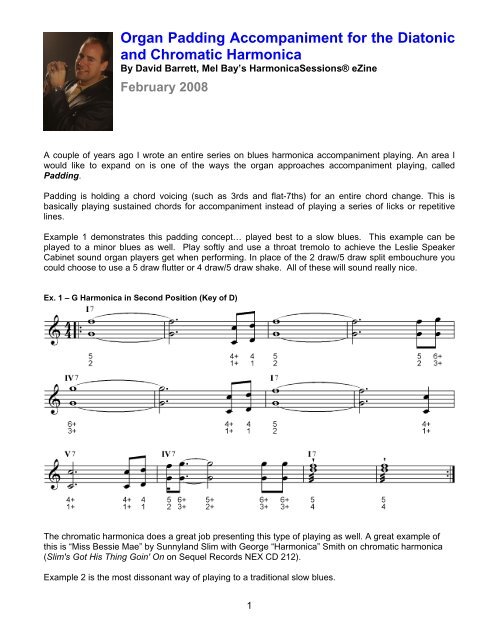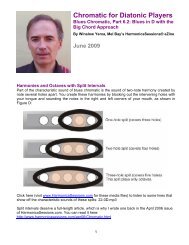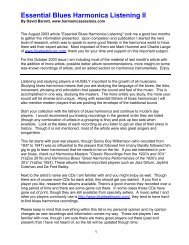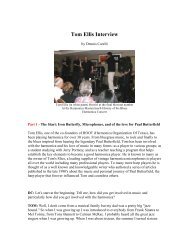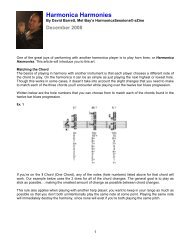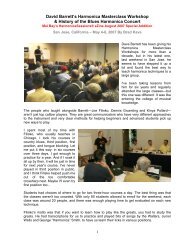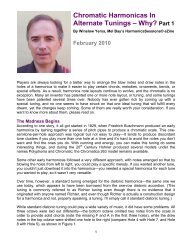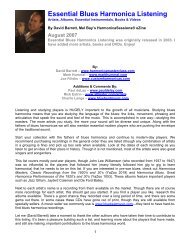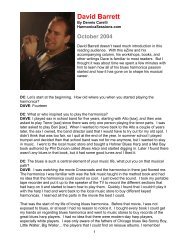Print this Article - Mel Bay's Harmonica Sessions
Print this Article - Mel Bay's Harmonica Sessions
Print this Article - Mel Bay's Harmonica Sessions
You also want an ePaper? Increase the reach of your titles
YUMPU automatically turns print PDFs into web optimized ePapers that Google loves.
Organ Padding Accompaniment for the Diatonic<br />
and Chromatic <strong>Harmonica</strong><br />
By David Barrett, <strong>Mel</strong> Bay’s <strong>Harmonica</strong><strong>Sessions</strong>® eZine<br />
February 2008<br />
A couple of years ago I wrote an entire series on blues harmonica accompaniment playing. An area I<br />
would like to expand on is one of the ways the organ approaches accompaniment playing, called<br />
Padding.<br />
Padding is holding a chord voicing (such as 3rds and flat-7ths) for an entire chord change. This is<br />
basically playing sustained chords for accompaniment instead of playing a series of licks or repetitive<br />
lines.<br />
Example 1 demonstrates <strong>this</strong> padding concept… played best to a slow blues. This example can be<br />
played to a minor blues as well. Play softly and use a throat tremolo to achieve the Leslie Speaker<br />
Cabinet sound organ players get when performing. In place of the 2 draw/5 draw split embouchure you<br />
could choose to use a 5 draw flutter or 4 draw/5 draw shake. All of these will sound really nice.<br />
Ex. 1 – G <strong>Harmonica</strong> in Second Position (Key of D)<br />
The chromatic harmonica does a great job presenting <strong>this</strong> type of playing as well. A great example of<br />
<strong>this</strong> is “Miss Bessie Mae” by Sunnyland Slim with George “<strong>Harmonica</strong>” Smith on chromatic harmonica<br />
(Slim's Got His Thing Goin' On on Sequel Records NEX CD 212).<br />
Example 2 is the most dissonant way of playing to a traditional slow blues.<br />
1
Ex. 2 – C Chromatic in Third Position (Key of D)<br />
Example 3 uses the same fake octave idea, but <strong>this</strong> time using note combinations that are tamer.<br />
Ex. 3 – C Chromatic in Third Position (Key of D)<br />
2
Example 4 uses octaves (mainly root notes) for a very “matching” sound. In other words, not too<br />
dissonant.<br />
Ex. 4 – C Chromatic in Third Position (Key of D)<br />
Finally, Example 5 uses a mixture of techniques—focusing more on a lick-based accompaniment idea<br />
within <strong>this</strong> organ padding concept.<br />
Ex. 5 – C Chromatic in Third Position (Key of D)<br />
About the Author David Barrett<br />
http://www.harmonicamasterclass.com/david.htm<br />
3


